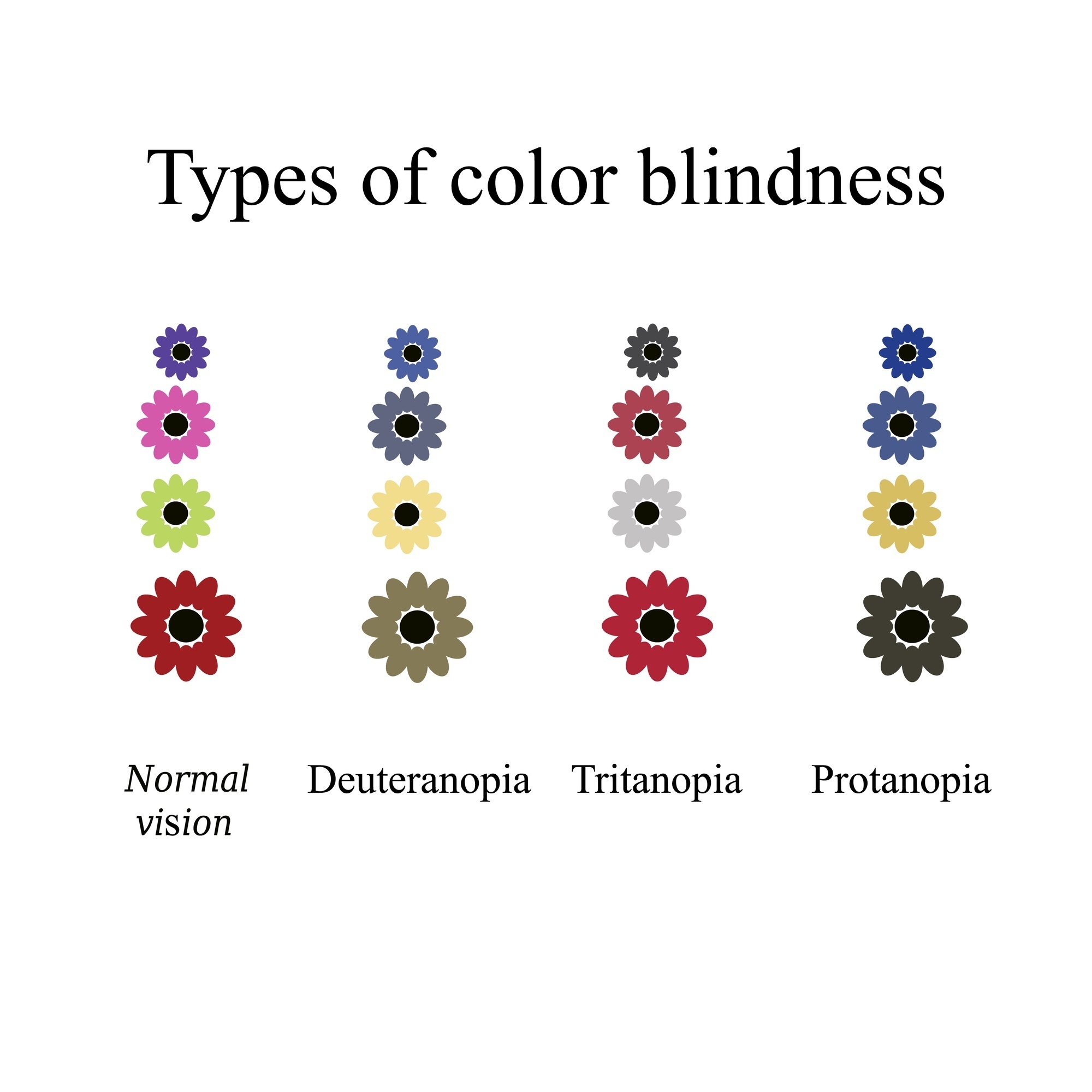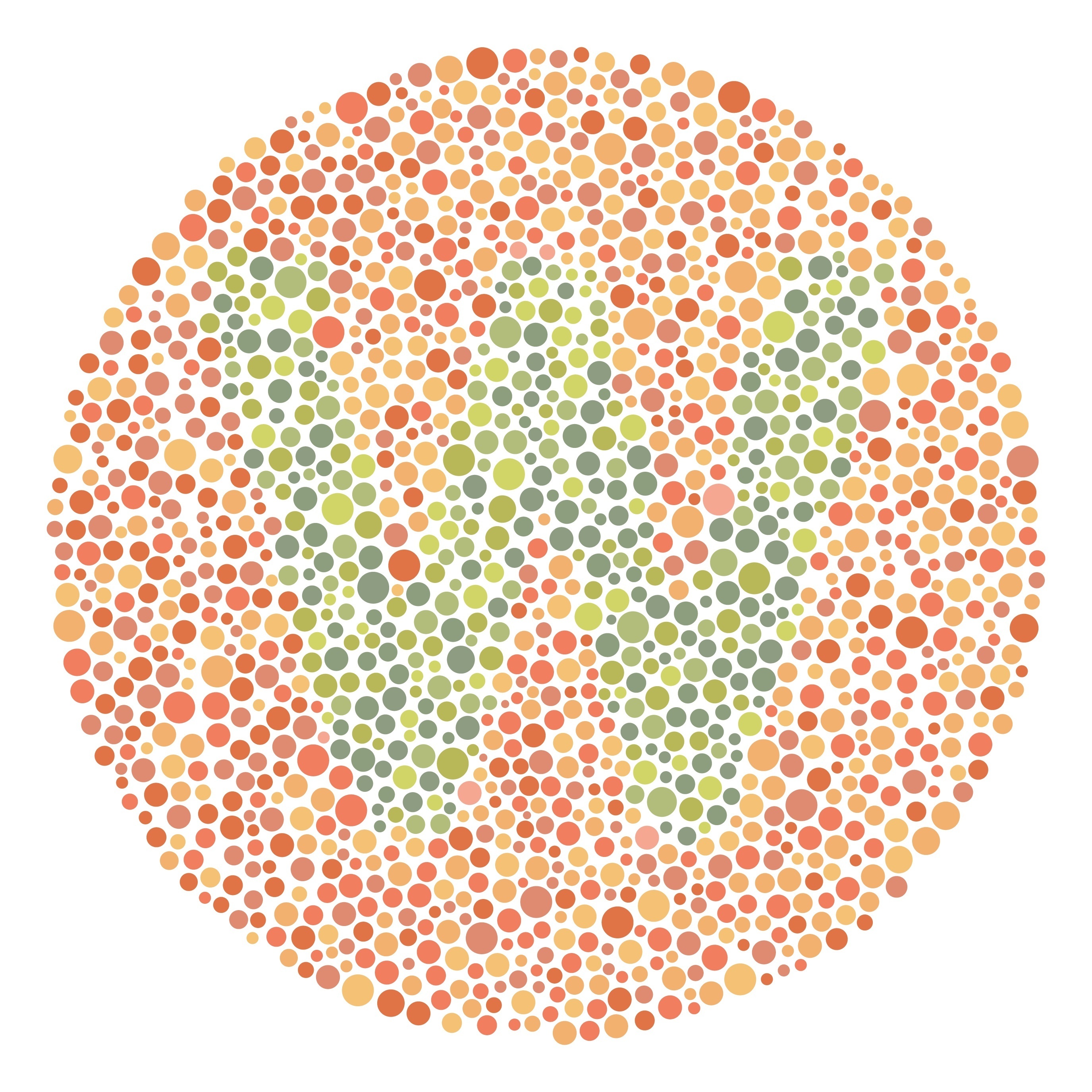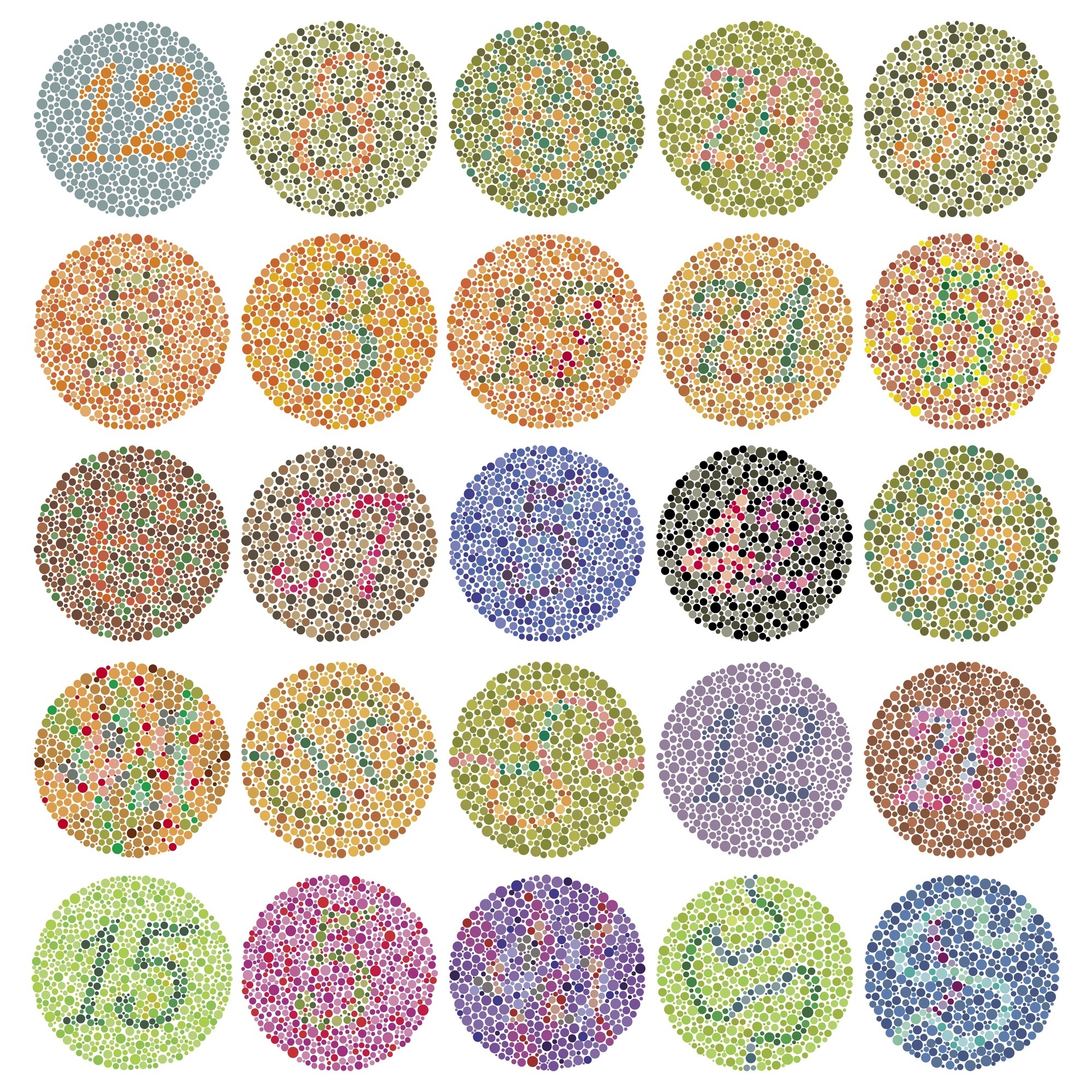Colour Blindness
Lesson 5
What is colour blindness
True colour blindness, in which the affected person sees the world like a black-and-white TV image, is very rare, almost unknown. But it is very common for people, especially males, to have a minor defect in the colour vision system of the eyes.
Such a defect causes difficulty in distinguishing some colours from others, or in making out certain colours. This is what is generally referred to as colour blindness. Most cases are present from birth, are quite mild and
they cause little trouble.
In white Europeans, about one male in 12 and less than one female in 100 have a problem seeing colours. Colour blindness is rarer in Asian people and very uncommon in black people. The great majority of colour-blind people have difficulty with either green or red. It is very rare for a person to be insensitive to blue or all colours.
What causes colour blindness
We see colours because the sensitive membrane (the retina) that lies at the back of each eye, like a
film in a camera, contains cells (cones) that are sensitive to one of three colours. Each of the three types of cone contains a different coloured material (pigment) which picks up one of the three colours.

There are cones for green, for red and for blue light. If all three pigments are present in normal amounts, then colour vision is normal. But if one or more is deficient there will be a loss of sensitivity to the corresponding colour.
The pigments in the cones are produced as a result of the action of three different genes on our chromosomes. If the genes are all normal, colour perception will be normal. But if one or more of these genes is defective, colour blindness will result.

Daltonism Ishihara Test Red and Green Upper Letter W
The reason colour blindness is more common in males is that the genes for the red and green pigments are on one of the two sex chromosomes (the X chromosome). Men have only one X chromosome, so if the defective gene is present there the problem will certainly appear.
Women have two X chromosomes and one of them is usually normal. For women to be colour blind, the cone pigment genes must be defective on both X chromosomes.
Although women with one defective gene are unaffected, each son has a 50:50 chance of getting the affected X chromosome and becoming colour blind. For a daughter to become colour blind, both the father and mother must pass on an X chromosome carrying the defective gene. The gene for the blue pigment is not on a sex chromosome, but is on one of the others and is hardly ever defective.
Rarely, colour blindness can be caused by a disease of the retina that damages the cones. Unlike the common hereditary colour blindness, this disease will also usually cause a severe defect of general vision. Some of the retinal diseases that can cause colour blindness are also hereditary, but in this case the problem is not simply one of cone pigmentation.
How is colour blindness diagnosed and treated
The easiest way to test colour vision is to use special plates, such as those prepared by the Japanese expert, Professor Ishihara. These plates are covered with coloured dots arranged so that if your colour vision is normal you will see the dots that form a number.
If you do not perceive the dots making up this number, you will see a different number, made up of dots that you can see easily.
Colour vision can also be tested by asking you to match a few pairs of coloured wool samples or to put a range of coloured discs into their correct sequence in the rainbow spectrum.

There is no known cure for colour blindness. Contact lenses and glasses are available with filters to help colour deficiencies, if needed. Fortunately, the vision of most colour-blind people is normal in all other respects and certain adaptation methods are all that is required.
You can be fined up to £1,000 if you don’t tell DVLA about a medical condition that affects your driving. You may be prosecuted if you’re involved in an accident as a result.
For people who must be able to read colour signals correctly - navigators, aircraft pilots, members of the armed forces, and so on - colour vision is screened by means of the Ishihara test and then checked, in a darkened room, using a lantern, usually the Holmes-Wright lantern, which projects a small circle of light that can be changed randomly to red, green or white.
The person being tested must identify all the colours correctly to pass.
There is no way to restore normal colour vision fully to a person with hereditary colour blindness. Some retinal diseases that cause colour defects can be treated, but loss of colour sensitivity is usually permanent.
If you have red or green colour blindness you can enjoy almost normal colour perception by wearing a single contact lens tinted to the appropriate colour.
How will colour blindness affect me
Colour-blind people seldom find their condition a drawback, and many are unaware that anything is wrong. It is only when some special requirement arises, such as reading electrical colour codes or coloured light signals, that they may face problems.
Very few trades or professions demand perfect colour vision and even those people with severe defects usually have no problems with traffic lights, provided the sequence is familiar and the position of the stop and go lights is known to them.
